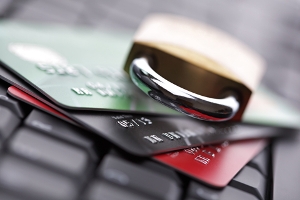Debit Cards: Signature or PIN, what’s What?
What kind of debit card do you have? The two types are direct debit cards and deferred debit cards.

Direct debit
- Use of a PIN (personal identification number), which the bank issues or you choose. Card purchases require entering the PIN, and money is taken out of your checking account on the spot.
- PIN-based transactions cost retailers less to process, and many banks pass the transaction fee onto the cardholder.
- Bank fees range from 25 cents to $1.50 per every PIN direct debit purchase. Not all banks blatantly notify the consumer of this, but this should be visible on the checking account statement.
- Usually safer than the deferred version, as a thief needs to know the PIN to use the card. For obvious reasons, direct debit cards are safer for online use than are deferred debit cards.
- Cannot be overdrafted unless you opt into overdrafting at the time of account creation.
Deferred debit
Think of a fusion between a traditional credit card and a direct debit card. Rather than on the spot of a purchase, money is withdrawn from your checking account within two or three days of the purchase.
- No PIN required; only the signature of the cardholder.
- Has potential for an overdraft, resulting in a fee. The purchase will get cleared even if you don’t have sufficient funds in your account.
- The overdraft fee could be $30 or more.
- Tend not to have any transaction fee.
Both of these cards provide a degree of protection for the consumer. With each it is essential the consumer checks their statements frequently as federal law requires banks to refund stolen funds when reported in less than 3 days and up to 60 days depending on the nature of the card.
Robert Siciliano, is a personal security expert contributor to Just Ask Gemalto and author of 99 Things You Wish You Knew Before Your Mobile was Hacked! . Disclosures For Roberts FREE ebook text- SECURE Your@emailaddress -to 411247.


























